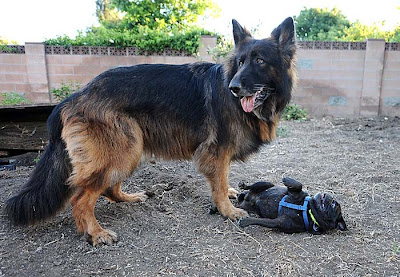 It's great to have them in the yard as they do lots of the pollination work, but there's no way to access their honey. Bobby noticed it yesterday morning and decided to build a hive for them so we could collect honey. He's kept and raised all sorts of animals, including bees. By looking through the garage he found 99 percent of the materials he needed to build this cool bee box together in one afternoon.
It's great to have them in the yard as they do lots of the pollination work, but there's no way to access their honey. Bobby noticed it yesterday morning and decided to build a hive for them so we could collect honey. He's kept and raised all sorts of animals, including bees. By looking through the garage he found 99 percent of the materials he needed to build this cool bee box together in one afternoon.This is the inside of the base level of the hive. Wooden dowels are inserted at various angles for the bees to hang their honey. The honey at the base level (the only level we have so far) is for the bees only. By placing additional levels, or "supers," on top of the base hive you get access to honey which can be collected.
Caulking the wood to make it watertight. This is the base box, with the lid on it.
This is the side of the box with a lip and a slit opening for the bees to use for entry and exit. Very similar to the crack in the wall where they live now.
And here's the box in place, the opening facing the crack in the wall where the bees currently live. Slowly the bees will migrate over to the box and will establish their honey production center there. Alternatively you can buy a queen and put here in the the the drones and workers will come.






























